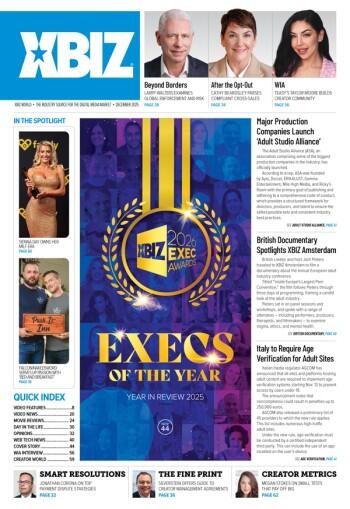The more successful you are, the more you grow — and the more you grow, the more complex your operations and technology needs. Since technology is the backbone of almost any retail business nowadays, one of the biggest challenges adult retailers encounter is making sure they have the right technology stack and staff needed to support growth.
In particular, one of the most important decisions any retailer can make is what to take on in-house, and what to farm out. This article will help guide you through that decision process, no matter what size your business is or what stage you may be at in your retail journey.
In particular, one of the most important decisions any retailer can make is what to take on in-house, and what to farm out.
Scaling Up: Two Key Thresholds
Store owners usually start out with just one or two locations, and sometimes a website. At this phase, the tech requirements are relatively manageable. Most often, someone within the organization who has a knack for it ends up managing technology along with multiple other job responsibilities. But when growth happens, that person may not be prepared to master every platform, wrangle every kind of vendor and stay on the bleeding edge of innovation — all while ensuring every decision aligns with the company’s master plan.
The two growth thresholds that have the biggest impact on store tech and operations are: reaching 10 stores, and reaching 30 stores. Here are some things to consider at each juncture.
Once a retail chain has 10 locations, processes tend to get stretched and start to break down. Many of the cheaper systems can easily manage one store, but quickly begin to fail and show their warts when you start to scale. For example, POS, CRM and inventory control needs are very different for 10 stores versus one. Handling the increased volume therefore often requires a whole new platform. Additionally, where one person used to be able to “wrangle” the technology and keep everything operational, now there are too many plates spinning at once. The retailer must decide whether to add staff, migrate to a scalable platform, or both.
By the time you are approaching 30 locations, hopefully those initial personnel and platform issues have been resolved. However, this next phase of growth brings other technology challenges to address. Those can include reporting, real-time data needs, efficiency of communications across all locations, loss prevention and real-time support seven days a week, 18 hours a day. Every decision made at this point can have a significant impact on your bottom line — in a positive or negative direction.
Three Questions to Ask When Scaling Your Tech
Scaling tech is complicated. Even the big behemoths in retail have a hard time with it. I’m working with a 400-store chain that’s been around for over two decades and they still can’t figure out insourcing customer support and tracking points! So once you reach those growth thresholds, how do you make those decisions? Start by pondering the following questions.
What is essential? One important rule of thumb is that you can outsource things that are important, but whatever is most essential — the things no one else can do, and that you need to feel confident about — you keep in-house. However, there is also another level of “essential,” namely your brand, your customers, the experience you are trying to deliver to them, your business plan and growth goals. Have a clear vision of these foundational elements, and let that vision inform your choices about what technology is needed to help realize it. Staying focused on these essentials will help you gain clarity on what makes sense to keep in-house versus where you can gain leverage, efficiency and cost savings via the targeted use of outsourcing.
What happens if you don’t outsource? Managing your technology in-house requires that you jump in fully, but you may not know how deep the water is. Like any other skill, you’ll learn from your mistakes — but those mistakes can be costly, so you want to be sure it's worth the risk. If you don’t outsource, will your systems be stable and secure? Perhaps most importantly: When something breaks that stops you from transacting, how fast can you fix it? You may not be thinking about these things now, but when your stores go down or get tangled up in a security snafu, it will be all you think about. Your POS, software and infrastructure are like links in a chain. If even one store fails, the fallout can be monumental. That is why another good rule is: When it comes to technology solutions, always err of the side of stability and redundancy. For crucial aspects of your business, you should have both an internal and outsourced solution in place.
Where should you spend on internal IT? If you do choose to go in-house, invest in technology products, platforms and people that can provide real-time data to help you make the most important decisions for your business. Especially for larger retailers, what scanner or tablet you’re using is nowhere near as crucial as whether you have a reliable internal technology captain — a strategist, innovator and problem-solver rolled into one. Outsource installs, store support and enterprise platforms that can be scaled and supported externally, but monitored and managed internally, to ensure that standards are being met.
Three Questions to Ask About Potential Vendors
Outsourcing tech solutions isn’t just an abstract concept. Once you go that route, you will be dealing with real human beings and companies with their own systems, culture and ways of doing things. You need to assess the right fit just as you would when hiring an internal employee. Consider the following questions.
Will the vendor really care about your biz? Most vendors put their best foot forward during the selling process, but once the honeymoon’s over and you’re stuck in a contract, will they be there when you need them? If you are a smaller retailer, and small retail is not their focus, you may fall through the cracks. Talk to their clients to get an idea of the real-world support they’re providing over time.
Will they truly dedicate resources just to you? We hear this question a lot. I advise rethinking your expectations, since depending on the task, you may not need a dedicated team. Doing some research on the skill, time and service needed based on your requirements can help you determine what, if any, dedicated resources you need and whether this particular vendor is the best resource for that level of support.
Will they scale with you? This question is ultimately about roles and responsibilities. If you have a crack tech team working internally as you’re scaling and growing, that team is likely better off in the office than out in the field opening stores. Besides, scaling technology labor internally doesn’t really pay off until you have more than 100 locations anyway, because of the coverage and response time necessary to provide immediate support to that many stores. Better to let an outsourced team open your stores with support from your captain! Just make sure the vendor offers a turnkey solution that fits your needs, based on your past experience starting up new locations.
The Path Forward
The decision of whether to insource or outsource your tech can be daunting. The process is multifaceted, and loaded with both challenges and opportunities. Even when you do make big choices, there will continue to be push and pull on smaller, specific questions of what to do internally versus what to outsource.
That is why I am not simply giving you answers here; this is all about what matters to you and the unique needs of your business. My goal is to give you things to think about. I also advise consulting with a tech expert who can look at your specific situation and priorities, and help you understand what it takes to scale in certain areas and what makes sense for you.
Whether opting for insourcing, outsourcing, or a combination of both, the key is to know your strengths, acknowledge what you don’t know, keep risk at a minimum, and strike the right balance between cost-effectiveness and operational efficiency. Fortunately, the tech options are always getting better, smarter and more scalable. Don’t be afraid to tap them!
Sean Quinn is the CEO of All Point Retail, a retail technology company that provides managed commerce solutions for businesses. He is a true veteran, both literally and figuratively. Bolstered by years of military experience in a variety of positions and commands, his strategic intelligence background laid the foundation for his passion for business intelligence through technology — especially in the retail arena.








